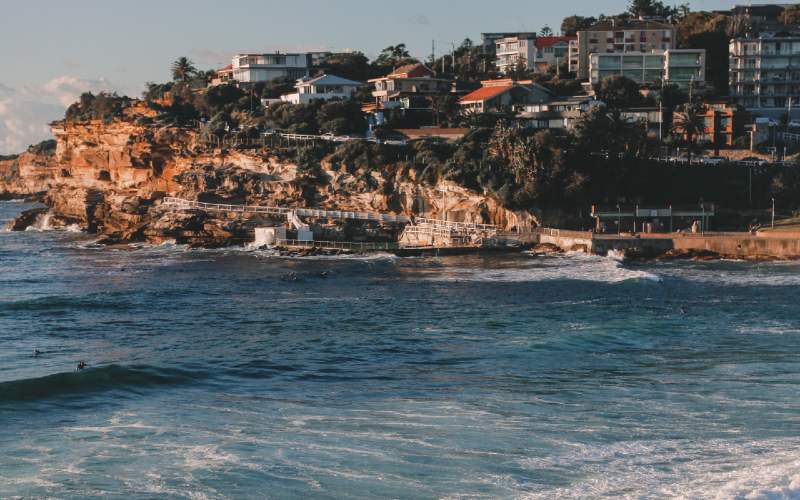Australian Bureau of Statistics (ABS) data released today shows household wealth in Australia also hit the highest quarterly growth rate recorded since the December quarter 2009.
Household wealth rose by 4.3% ($501.5 billion) in the December 2020 quarter to a record high of $12,033.5 billion.
Average household wealth increased 4.2% ($19,028) to $467,709 per person.
The increase was mainly attributed to a 2.2% surge in residential assets, followed by a 1.4% increase in superannuation balances and a 0.5% rise in shares.
"The December quarter growth in household wealth was driven by rising residential property prices, reflecting record low interest rates, support through government programs such as the First Home Buyer and the HomeBuilder schemes, and pent up demand from buyers," ABS Head of Finance and Wealth Katherine Keenan said.
Household wealth increased by 7.0% throughout the year.
Residential assets surged by 7.7% with rising property prices contributing 6.1%.
“The growth in residential assets was seen across both owner-occupier and investor housing in the December quarter," Ms Keenan said.
"Owner-occupier housing loans grew 1.9%, which was the strongest growth seen in four years, while investor housing loans grew 0.4%, which was the first positive growth recorded in the past two years.”
Buying a home or looking to refinance? The table below features home loans with some of the lowest interest rates on the market for owner-occupiers.
| Lender | Home Loan | Interest Rate | Comparison Rate* | Monthly Repayment | Repayment type | Rate Type | Offset | Redraw | Ongoing Fees | Upfront Fees | Max LVR | Lump Sum Repayment | Additional Repayments | Split Loan Option | Tags | Row Tags | Features | Link | Compare | Promoted Product | Disclosure |
|---|---|---|---|---|---|---|---|---|---|---|---|---|---|---|---|---|---|---|---|---|---|
5.79% p.a. | 5.83% p.a. | $2,931 | Principal & Interest | Variable | $0 | $530 | 90% |
| Promoted | Disclosure | |||||||||||
5.74% p.a. | 5.65% p.a. | $2,915 | Principal & Interest | Variable | $0 | $0 | 80% |
| Promoted | Disclosure | |||||||||||
5.84% p.a. | 6.08% p.a. | $2,947 | Principal & Interest | Variable | $250 | $250 | 60% |
| Promoted | Disclosure |
It comes after forecasts from big four bank ANZ of a 17% house price rise in 2021, the most bullish forecast to date.
"The strength in sentiment is putting upward pressure on prices, with low stock levels adding to the fear of missing out (FOMO) sentiment emerging in the market.gains of around 17% across the capital cities (up from 9% previously) in 2021," ANZ senior economist Felicity Emmet said.
Fellow big four lenders Commonwealth Bank and Westpac predicted 8% and 10% price increases this year respectively.
If house prices continue on their upwards trajectory, Ms Emmet said the Australian Prudential Regulation Authority (APRA) may need to step in.
"By June we expect prices to be rising at a more moderate pace given the end of government programs like JobKeeper and HomeBuilder, and a lift in fixed mortgage rates," she said.
"By year end though, we expect the regulators will step in with macroprudential controls to address the overheating market, with the exact measures likely to be dependent on how the market develops over the next six months or so."
Bank of Mum and Dad among top 10 mortgage lenders
With soaring property prices making it harder for first time buyers to enter the market, more are relying on their parents to help them enter the market.
New research from Digital Finance Analytics (DFA) has found that around 20% of first home buyers are getting help from their parents, with parental contributions averaging $75,000.
What's more, the research found the total amount lent by the bank of mum and dad is approaching $30 billion, which is more than HSBC, AMP, Heritage Bank and Bank of Queensland have in loans.
While using the bank of mum and dad can help first home buyers fast track their way into the property market, it's not without its risks.
One of the biggest risks for guarantors is potentially losing their property if the borrower can't meet the repayments anymore.
Principal of DFA Martin North warns the first five years are the riskiest time for guarantors.
“You’re twice as likely to default in the first five years if you got help from mum and dad and never got into the savings mindset,” Mr North said.
See also: Australia's property boom: 'Sobering' decisions facing first time buyers
Photo by Nicolas Gonzalez on Unsplash

Ready, Set, Buy!
Learn everything you need to know about buying property – from choosing the right property and home loan, to the purchasing process, tips to save money and more!
With bonus Q&A sheet and Crossword!






 Harrison Astbury
Harrison Astbury
 Harry O'Sullivan
Harry O'Sullivan










